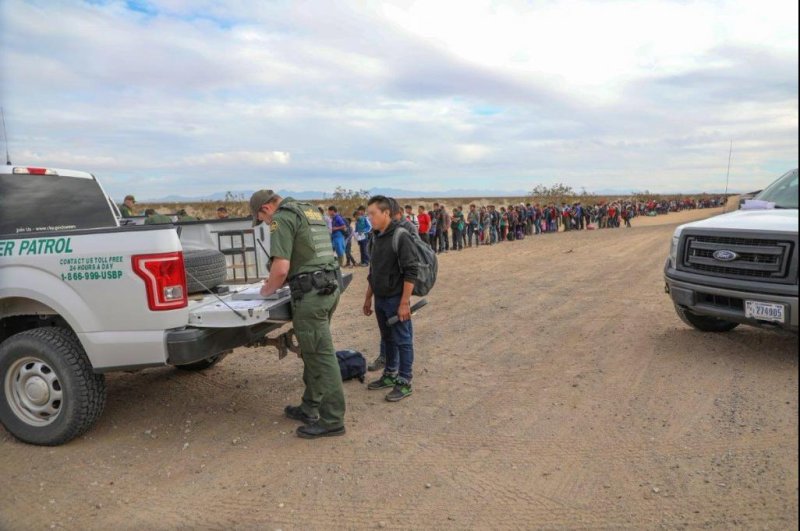Border Patrol agents processed a group of 376 Central American migrants on Monday. It has since been revealed that they represent the largest single group to cross the border. Photo courtesy of CBP Arizona.
Jan. 19 (UPI) -- Nearly 400 migrants who crossed a tunnel underneath a border wall in Arizona voluntarily turned themselves into authorities this week, U.S. Customs and Border Protection said.
A group of 376 migrants, comprised mostly of Guatemalan families and children seeking asylum, tunneled underneath the U.S.-Mexico border fence near Yuma, Ariz., just before noon Monday, the Arizona Republic reported. ABC News reported it was the largest group of asylum seekers to enter the U.S.
Customs and Border Protection officials released video footage Friday of the migrants walking along the U.S. side of the border fence and waiting in line for U.S. agents to process them for asylum.
Migrants, with the help of smugglers, dug seven holes in the soil underneath the border fence, agent Jose Garibay, a spokesman for the Customs and Border Protection's Yuma Sector, said.
Out of the 376 who crossed, the agency said more than 170 were children, including 30 unaccompanied minors.
It is the largest single group ever recorded since the agency began seeing a surge in arrivals of these migrants in the past two years, Garibay said. Historically, however, recent years have seen fewer unauthorized crossings than in years past. ABC cited government statistics indicating unauthorized crossings peaked in 2001, when there were 1.6 million apprehensions.
But more than 80 percent of recent apprehensions are of parents with children.
Yuma Border Sector Chief Anthony Porvaznik said his unit urgently needs funding to provide for these families.
"That's our No. 1 challenge that we have here in the Yuma sector, is the humanitarian problem," Porvaznik said.















